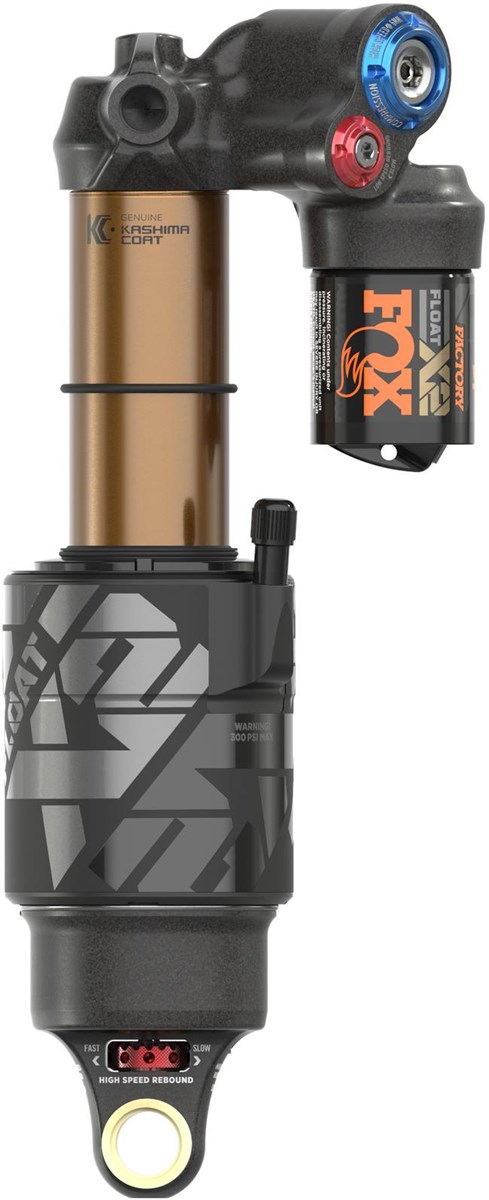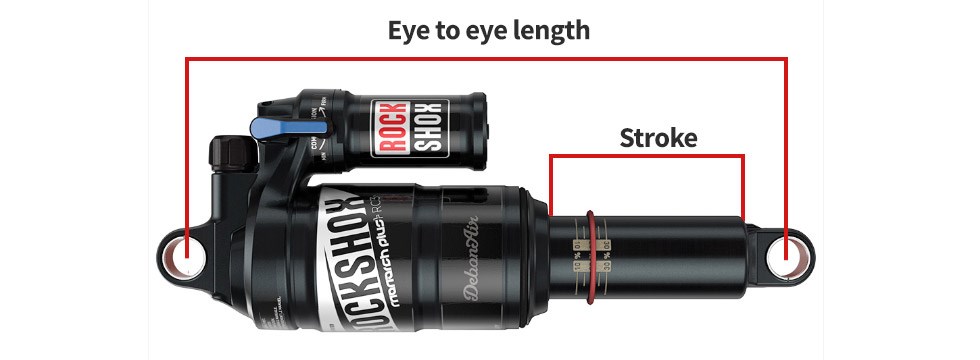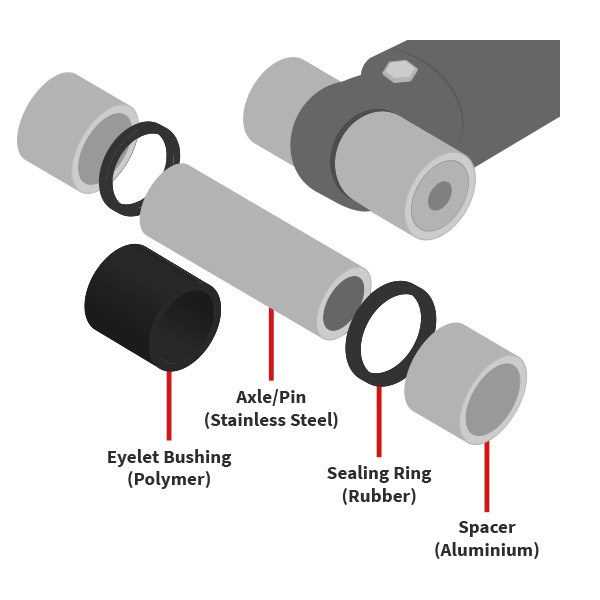Fox Racing Shox Float X2 Factory Shock 2021

The all-new X2 changes everything, including the game. This award-winning, gravity-defying air shock holds nothing back, especially not you. Boasting a laundry list of advanced features, the Float x2 is ready to clean house.
FEATURES
- NEW graphics.
- NEW chassis & damper.
- NEW high-flow main piston.
- NEW progressive bottom-out bumper.
- Improved bearing ratio for metric sizes.
- Matching 8-click HSC and HSR adjustment on GRIP2 forks and X2 shocks.
- Updated compression ratios, 300psi max.
- Improved high-speed rebound tunability via addition of VVC (Variable Valve Control).
- Increased control and decreased harshness via linear damping.
- Ultra-low-friction, highly durable damper shaft finish.
- Independent firm mode circuit - firmer lockout than previous Float X2.
- Lower friction air seals.
- Reduced length reservoir for better fit on more frames.
- Finned inner body for improved structural rigidity and reduced hysteresis.
Occasionally, without notice, manufacturers change product design and/or specifications.
Rear Shocks Sizing
It is not as simple as just bolting on any rear shock, there are some very important measurements to take into consideration.
Once the spring type (air or coil) has been decided, there two fundamental measurements needed.

Eye to eye: The total shock length. Measurement is made between the centres of each mounting hole/bolt in a straight line. This must match the new shock and is listed by the frame manufacturer in either mm or inches, often along with the stroke length. eye to eye is listed first and stroke length second. For example, 190mm x 50mm or 7.5” x 2.0“
Stroke length: The amount of travel the shock has (not the bike) can be seen by how much the telescopic part of the shock moves under full compression. Either the shaft itself can be measured or it can be worked out from the difference between the eye-to-eye length when fully extended, and fully compressed. Shown as the second number in the shock size by the manufacturer (eg 190mm x 50mm or 7.5” x 2.0”), this again should be the same as the original shock and as intended by the frame manufacturer to work with that particular linkage design.
Mounting hardware
Hardware includes the bushings and bolts that fit into the eyelets at either end of the shock, allowing it to be fitted to the frame. Although standards are starting to settle, the hardware will vary with each frame and shock combination. If replacements are needed there are dedicated suspension tuning specialists who can supply these parts.

Coil Shocks
Coil shocks can be tuned to your riding style by using a spring with the correct spring rate for your weight. The best spring for you will most likely be purchased separately, some riders will find they experiment with different springs to find their best set up.
Springs are rated by pounds (lbs) and this should be printed on the spring along with the travel length of the spring in inches. For example 400 lbs x 2.25”.
Coil springs are available in either steel or titanium, there is no noticeable performance difference between the two apart from the weight advantage of titanium.
Most people will experiment with spring rates to find the right spring for them, although a few turns of preload can be added when setting sag it is always best to find the correct spring rate for your weight, riding style, and frame.
Jargon Buster
Attack position – body position of the rider when riding into a technical section of trail, braced for any trail feature with weight balanced in the centre of the bike.
Compression – Controlling how the suspension moves through the available travel.
High-speed compression – How the suspension moves through the travel from High-speed hits not high-speed riding, for example rocks, roots, braking bumps, landing from jumps/drops etc.
Low-speed compression - How the suspension moves through the travel from low speed movement not low-speed riding, for example when under compression through a berm, going up a transition of a jump etc.
Linear – The strength required to compress the spring remains the same through the full movement.
Progressive – The strength required to compress the spring increases progressively through the full movement.
Metric – Referring to the eye-to-eye measurement of a shock in mm rather than inches.
Piggy-back – An extra part of the shock that comes out from the main body. This gives a larger oil volume for internal damping, offering better damping control and more consistent performance on extreme terrain. The frame design must have the space for this larger type of shock and will not fit all bikes.
Preload – How much the coil spring is compressed in its static state.
Rebound – how fast a shock returns to full extension.
Sag – how much travel is used under rider weight.
Shock pump – A high pressure air pump used to adjust air shocks, running at a much higher pressure than a normal inner tube/tyre pump.
Spring rate – The force needed to compress the shock.
Stroke length – the amount of travel the shock has, not the same as the amount of travel the bike has.
Trunnion – A trunnion mount shock has a larger body where one eyelet is housed in the body. This allows a longer stroke length in a shorter eye-to-eye.
Volume spacers – Internal plastic spacer that can be added inside an air shock to reduce internal air volume and so increasing the progression of the shock through its travel.
Customer reviews and Q&A's are disabled because you declined functional cookies.
To enable reviews and Q&A's click the 'Cookie Settings' button below and enable functional cookies.
No longer available
Sorry you missed the Fox Racing Shox Float X2 Factory Shock 2021.
This product is no longer available.